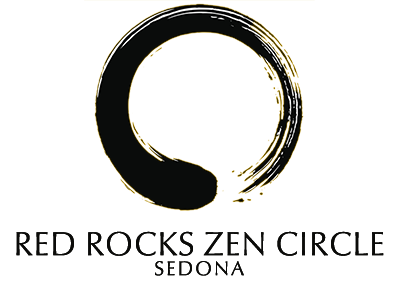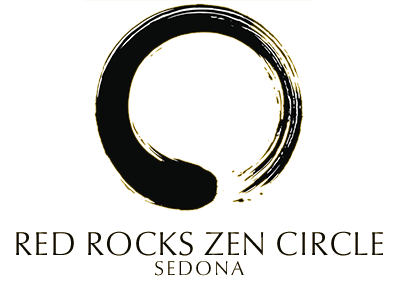The following is a Dharma Talk presented by Deirdre Eisho Peterson in February, 2015.
We have been studying Roshi Robert Aitken’s book, Mind of Clover, on the Buddhist Precepts. This morning I wanted to talk a little about taking the Precepts (or as it is sometimes called, Taking Refuge), the Path of the Bodhisattva, and emptiness – to explore what is the relationship between these three aspects of our practice. We’ll also see what perspective Zen Master Dogen can add to this.
So in our Buddhist tradition, the Precepts are ethical guidelines, and they are about our way of being in the world. They are about relationships, about being with others in a way that is non-harming and compassionate and that leads to healing and clarity. Although there are some similarities with the 10 Commandments that we know from Christianity and Judaism, the Precepts are different, because they are not commandments that we are forbidden to break, but are more about looking deeply at our actions and intentions. For example, the Precept of Non-Killing encourages us to reflect on killing and not-killing. Most of us are not murdering other people, but in what other ways do we kill? Do we kill aspects of ourselves, or others? Do we kill other beings to eat out of need or out of habit? What about the ways that we kill as a society? And on the other side of the coin, how do we experience non-killing? How do we give life? The Precepts encourage us to be more conscious and work deeply with these questions, with all aspects of our life.
The 16 Precepts that we take here in our White Plum lineage are known as the Bodhisattva Precepts because they describe the way that an enlightened being naturally acts. Remember that a Bodhisattva, as my teacher Enkyo Roshi often describes her, is an awakening being, an enlightening being. A being who works towards the awakening and liberation of others. A being who vows not to go off into his own awakened retirement until all beings are liberated. The Bodhisattva Precepts describe the way of such a being, and they also guide all of us in that direction. In a way they protect us, and in a way we protect them by honoring them. Protecting and protection, these two things are not separate. Over time we come to see that the Precepts, or the Kai, are not the 10 Commandments on a wall, are not outside ourselves, but that we ourselves are the Kai, that the Kai or Precepts are the natural expression of our BuddhaNature. The word “Ju-Kai”, the term that we use for the formal ceremony of taking the Precepts, actually means to transmit awareness of our own nature.
The Jukai ceremony begins with our taking refuge in the Three Treasures of Buddha Dharma and Sangha, which are the first Three Precepts. We take refuge in Buddha, in the awakened nature of mind. We take refuge in the Dharma, in the teachings and in reality itself, the way things actually are. And we take refuge in the Sangha, in harmony, in the community of those who have chosen to follow this Path, those who offer us support on the Path and who we support by our presence and our practice.
How do we understand this expression to “take refuge”? The ancient text known as the Dhammapada explains it this way: “Driven by fear, people go to many places to take refuge. But they who have gone to the Buddha Dharma and Sangha for refuge, this indeed is the safe refuge, the supreme refuge.”
This text asks us to consider what refuge means to us, to consider what places we tend to turn to as a refuge. It could be our intellectual knowledge – that we take refuge in being smart. Or in being healthy, and having a fit healthy body that will protect us from illness and aging. It could be in money, in having wealth that we feel will protect us. Or perhaps we take refuge in another person, someone we feel will save us. It could be that we have a special place somewhere, a home, or a place in nature, or the zendo, that we consider our refuge, our sanctuary.
But when we look closely and with our wisdom eye, we see that none of these things are permanent or reliable. We may take refuge in having a strong and healthy body, but there will come a day when the body is not in that condition. We may take refuge in another person, but we don’t know how long that person will live, or how the nature of our relationship with them may change. Our special cabin in the mountains may burn in a fire or be swept away by flood. Our wealth could disappear in a poor investment.
This is why Taking Refuge is closely linked to fundamental truths of Buddhism: that things are impermanent …. that they are fluid, interdependent, lacking an abiding self. That things are conditioned, meaning that they arise under certain conditions, and that they will change when conditions change. When we really recognize this truth, we realize that none of the externals in life offer us any permanent guaranteed sanctuary. We can appreciate and have great gratitude for the positive things in our life while they are with us, and at the same time we realize that our true refuge is in the Three Treasures of Buddha Dharma and Sangha. They are what enable us to live with wisdom, compassion and clarity in a world in which all things, including ourselves, are continually in a process of change.
There is a chant on the Three Refuges that is recited in some Buddhist centers in the original Pali language, often at the end of the evening or at dawn. It begins with the powerful words:
Natthi Me Saranam Annam — Nothing Else Is My Refuge.
Buddho Me Saranam Varam – Buddha Is My Refuge.
Dhamma Me Saranam Varam – Dharma Is My Refuge.
Sangho Me Saranam Varam – Sangha Is My Refuge.
We take refuge in these Three Treasures … and we don’t do just it for ourselves. With the Three Pure Precepts, the next of the Bodhisattva Precepts, we vow that we will help others along the way. We vow to cease from evil, to practice good, and to do good for others. When we see our inter-connectedness, our interdependence, we naturally want to help beings and not harm them. To help them in whatever way that we can.
So we think of a Bodhisattva as someone doing good in the world. We often say that very casually – “oh yes she’s a total bodhisattva, she took on that difficult project that no one else wanted to do.” And that’s true. But it’s important to remember that one of the greatest gifts we give others is when we wake up and are able, moment by moment, to be liberated from our delusions about self and other, and to help others to wake up from the dream of ego as well. This is the true path of the Bodhisattva. Our own awakening is not just for ourselves, but for all beings.
This is something that is emphasized in the Diamond Sutra, a seminal text in Zen. The Diamond Sutra begins when one of the disciples of the Buddha asks a question about the Bodhisattva Path. “How should one who has set on the Bodhisattva Path take his stand, how should he proceed, how should he control the Mind?” And the Buddha says: “However many beings there are, one should bring all of them to complete awakening … but having done that, one should realize that one has brought no beings to awakening. Why? Because anyone to whom the idea of a living being occurs or the idea of a person occurs should not be called a Bodhisattva.”
This may sound confusing, but the key word in this teaching is “idea”, or concept. The Buddha says that anyone to whom the idea of a living being occurs should not be called a Bodhisattva. In other words, that a Bodhisattva does not grasp others with thought, with ideas about them. We could say that a Bodhisattva engages with others to help them, to free them, but does not grasp them with thoughts, concepts, judgments, opinions — because that would involve separation. Our thinking mind easily takes us into the duality of us-and-them, me-and-you. The Buddha is saying that a Bodhisattva does not create separation through thoughts, opinions, and judgments of others, in other words does not create duality.
The Diamond Sutra tells us that emptiness, this non-separation, this interdependence of all things, is foundational to the Bodhisattva’s action in the world. So emptiness and compassion are inextricably linked.
We see this also in Zen Master Dogen’s commentaries on an ancient text known as The Bodhisattva’s Four Methods of Guidance. In the text there are four methods listed. The first three are easiest for us to understand: it is said that generosity, kind speech and helpfulness are important methods for Bodhisattvas to employ in the world. These are of course wonderful qualities to cultivate.
The fourth method of the Bodhisattva, and a crucial one, is something translated as Identity Action, and that is a little less easy for us to see. For starters, the Japanese characters for this phrase don’t translate so easily into English. Identity Action in Japanese is Do-Ji. “Do” means “same”. “Ji” can mean a thing, or a view, or an attitude. So it is a point of sameness, non-opposition, inclusiveness. Dissolving boundaries. Being in the flow of life, not standing as an isolated unit. When we experience Identity Action, self and action are one. There is just the doing.
Identity Action means actions that don’t have a subject or an object. You could say we merge with the activity. A dancer being one with the dance. A swimmer being one with the stroke. It doesn’t have to be something exotic or holy, it could be a soccer team, totally immersed in the game. Maybe you, making your bed in the morning. It’s being at one with whatever we encounter. We’re giving up the self, giving up our concepts and notions. As Dogen says, When you leave the Way to the Way, you attain the Way.
This is the foundation of liberating all beings, including ourselves. We free ourselves and others from our own ego-centered delusions. Then there is just the activity, just the encountering of whatever we encounter. So much of Zen practice is about discovering the way to our essential oneness, our wholeness with life, with the seamless flow.
When we first hear the word “Oneness”, we can have a lot of misconceptions about what that means. In Zen, it is not a concept to ponder — it is experiential. We can experience it in intimacy with whatever we are doing. We find this oneness when we reconnect with life – our life, all of life. Reconnecting, because originally nothing was ever unconnected. Our own awakening to this truth ripples outward towards the liberation of all beings. This is the true Path of the Bodhisattva.

